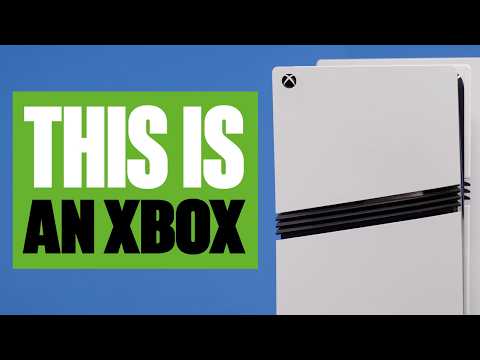Valve Corporation, renowned for its groundbreaking games and innovative technologies, has been at the forefront of the gaming industry for years. Dota 2, one of its flagship titles, has garnered a massive global following. However, even giants stumble, and Valve’s journey with Dota 2 has not been without its share of controversies.
Here, we dissect the top six blunders made by Valve’s top management concerning Dota 2:

1. Misleading the Community with Battle Pass Revenue
For years, Valve’s Battle Pass system has been a beacon of community engagement. Players eagerly purchase the Battle Pass, not just for the in-game rewards, but also to contribute to The International’s prize pool. Valve had committed to adding a 25% cut from the Battle Pass sales each year to this pool.
However, in 2025, a shocking revelation came to light: only 6.45% of the total Battle Pass revenue was added. This discrepancy means that if Valve had honored its 25% commitment, the prize pool for TI11 would have been a staggering $73 million! This breach of trust has left the community feeling deceived and questioning Valve’s integrity. The ramifications of this are vast, with potential long-term damage to Valve’s reputation.
2. Cancelling The International 2025 Amidst the Pandemic
Granted, 2025 was a challenging year for the entire world due to the COVID-19 pandemic, with many events, including esports tournaments, faced cancellations.
While many organizers adapted by shifting to online formats, Valve made the controversial decision to cancel The International 2020. This move was especially jarring when Riot Games, Valve’s primary competitor, successfully conducted their main League of Legends tournament. The Dota 2 community felt left in the lurch, especially when other esports titles showcased adaptability in these trying times.
Source: Valve
3. “Lost” Revenue from the Battle Pass
The Battle Pass has always been more than just in-game content; it’s a pact between Valve and its players. The understanding was simple: a portion of the Battle Pass revenue would bolster The International Prize Pool. However, the 25% revenue cut from the 2025 Battle Pass vanished into thin air.
It was neither refunded to the players nor rolled over to the next International. This move was perceived as sheer greed on Valve’s part, leading to widespread discontent and calls for transparency. The community’s trust was further eroded, with many feeling that their loyalty and financial contributions were taken for granted.
4. The Bali Major Production Fiasco
Major tournaments are not just about the games; they’re a spectacle, a celebration of the game and its community. The Bali Major, however, was plagued with production issues.
While Valve outsourced the production, the onus of ensuring a seamless experience for players and viewers alike rested with them. The lack of oversight and adherence to quality standards was evident, leading to a subpar experience for everyone involved. Such mishaps not only tarnish the image of the tournament but also reflect poorly on Valve’s commitment to delivering quality events.
Technical pause in grand finals between Team Liquid and Gaimin Gladiaotors at Bali Major 2025
5. Mismanagement of Resources Between Dota 2 and CS2
Juggling multiple flagship titles is no easy feat, but it’s what’s expected from a behemoth like Valve. However, the apparent mismanagement of resources between Dota 2 and CS2 has been glaring. Lackluster compendium designs, delays in celebrating milestones, and prolonged development times for in-game content have left fans frustrated.
A quote from an article sheds light on Valve’s unique, albeit flawed, work culture:
“Valve has no managers… Every single person works on whatever they want as it interests them.”
While this approach fosters creativity, it seemingly lacks direction, leading to the issues the Dota 2 community currently faces.
6. 2025 Battle Pass Debacle
Innovation is crucial, but so is delivering on promises. Valve’s decision to scrap the 2025 Battle Pass in favor of something “new” raised eyebrows. The subsequent reintroduction of the Battle Pass, stripped of its former glory, was a slap in the face for many fans. The reduced features and content led to a significant dip in the prize pool, signaling the community’s disillusionment with Valve’s recent decisions.
The International 2025 witnessed an unexpected start in terms of its prize pool. Within the first 12 hours of its release, the prize pool reached record-low numbers. The Dota 2 community added only $500,000 to the initial amount of $1.6 million set by Valve, the game’s developer. This was a surprising turn of events, especially when compared to the enthusiastic contributions of fans in previous years.
Interestingly, the previous year’s Battle Pass, associated with the tournament’s prize pool, was the first not to surpass its predecessor. Yet, it had a more promising start than TI 2025, boasting over $4.7 million at the same 12-hour mark.
The International 2025 Compendium was released on September 28. Notably, it offered fewer cosmetic rewards than previous editions. This reduction might have influenced the community’s initial hesitation in contributing to the prize pool. Valve had previously announced their intention to move away from the Battle Pass system, focusing more on game updates and other in-game events instead.
Jaishil’s take: Valve stands at a crossroads. The trust of the Dota 2 community hangs in the balance. To rectify the dwindling prize pool, Valve could utilize the untouched 25% cut from the 2025 Battle Pass or the remaining 18.55% from the 2025 Battle Pass.
Beyond financial reparations, Valve needs to introspect and overhaul its approach to Dota 2. The community’s reluctance to invest in the latest Battle Pass and the evident dissatisfaction are clear indicators that change is not just necessary; it’s imperative.
Read next: Saksa and his insane plays will be missed at The International 2025







